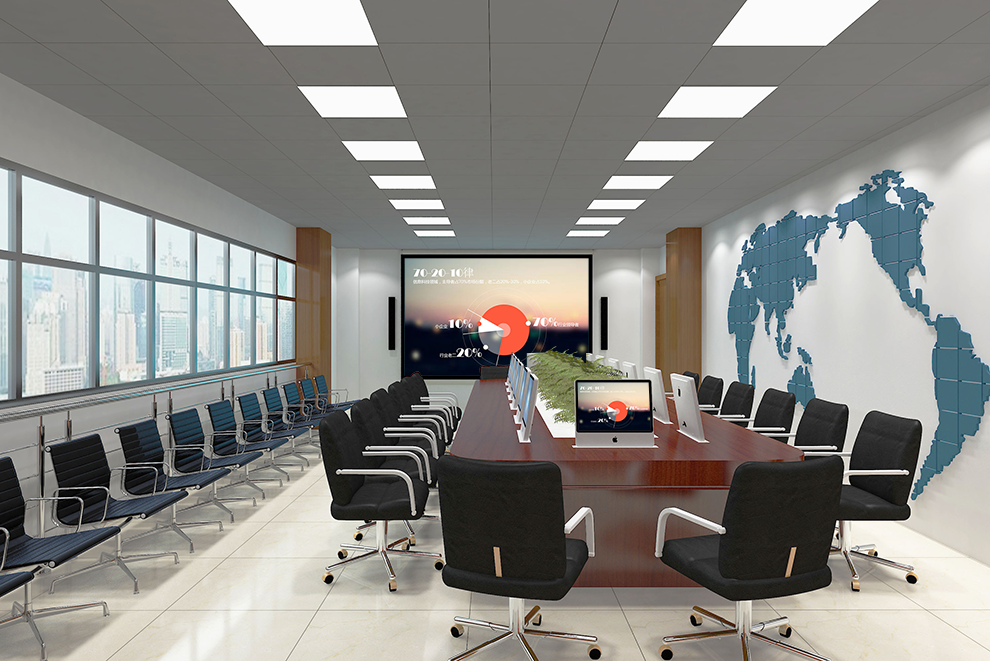Use This for WiDi: More Stable Classroom Mirroring for Windows Devices
Do you have a smart classroom with mainly Windows devices and want to achieve wireless mirroring without lagging? This screen mirroring device is deeply compatible with the native WiDi protocol! Without any extra software, it connects Windows computers and tablets to a large classroom screen with a single tap, making lesson plan pushing, practical demonstrations, and teacher-student interaction smoother and activating the educational value of the Windows ecosystem.
2-Step Connection: No Learning Curve for Teachers and Students
It perfectly fits how Windows devices operate, so you’ll know how to use it right away:
- Quick Hardware Setup: Plug the receiver into the smart board or the main classroom screen. After it’s powered on, the large screen will show a dedicated WiDi name (e.g., “10th Grade Class 3 Windows Screen”). Connect your Windows device and the mirroring device to the campus Wi-Fi. There’s no need to install any drivers or plugins.
- Native Mirroring: In the Windows taskbar, click the “Action Center” -> “Project.” Select “Connect to a wireless display,” then choose the mirroring device name. The connection will be complete in 1-2 seconds, with the picture synchronizing in real time. A teacher or a student can learn how to do it just by watching once.
Core Advantages: More In-Depth Educational Interaction with the Windows Ecosystem
Native Compatibility: No Device Is Left Behind
- Universal Model Compatibility: It perfectly supports Windows 8.1+ and works with mainstream laptops, desktops, and 2-in-1 tablets from brands like Lenovo, HP, Dell, Huawei, and ASUS. The compatibility rate for older educational computers and new high-performance models is over 95%, so you’re not limited by your device model.
- Lightweight and Software-Free: There’s no need to install any extra teaching software on your Windows device. It directly uses the system’s WiDi function, which prevents software conflicts and saves memory, meeting the need for stability and simplicity in a teaching environment.
- Compatibility with Windows Accessories: A teacher can use a Windows tablet with a stylus to annotate a mirrored lesson plan, and the annotations will be synchronized to the large screen and student devices in real time. A keyboard and mouse connected to a Windows computer can directly control page flipping and annotations on the mirrored content, creating a seamless operation.
Efficient Content Flow: More Flexible Teaching
- Sectioned Lesson Plan Pushing: A teacher can split a lesson plan on their Windows computer into modules like “Theoretical Explanation,” “Case Study,” and “Practical Steps.” They can use WiDi to push each section to the smart board and also send it to student Windows tablets at the same time, which keeps students from getting ahead. When they push a CAD drawing or a 3D model, WiDi automatically optimizes the large screen’s ratio, so the teacher can drag, rotate, and zoom in to explain it.
- Instant Result Upload: After a student finishes a design drawing or a data report on their Windows tablet, they can tap “WiDi Push,” and their work will be synchronized to the main screen and the teacher’s computer in 1 second. The teacher can directly annotate and edit it on the large screen, which boosts feedback efficiency by 80%.
- Cross-Device Handoff: After a teacher mirrors a lesson plan from their Windows computer to the smart board, they can use a 2-in-1 tablet to walk around the classroom and maintain control with WiDi, remotely flipping through pages and annotating. They can walk up to a student to provide guidance on a practical task without interrupting the lesson’s pace.

All-Scenario Compatibility: Windows Devices Empower Smart Classrooms
Daily Teaching: Boosting Interaction
- In a math class, a teacher can use a Windows computer to mirror a geometric model to the smart board with WiDi. A student can use a tablet to drag the model to prove a theorem, and the results will be mirrored in real time. In a Chinese class, a teacher can push an audio recording of a lesson to the classroom speaker and annotate key words and sentences on the board. A student’s listening, speaking, reading, and writing skills will all improve at the same time.
- In a computer class, a teacher can mirror a coding interface to the smart board, explaining the logic line by line. A student can follow along and write the code on their Windows computer. If they get an error, they can take a photo of their screen and upload it, and the teacher can annotate remotely to correct it, making the teaching more precise.
Practical Training: More Precise Guidance
- In a practical training class for auto repair or electrical mechanics, a teacher can use a Windows computer to mirror a video of a device being taken apart or a circuit diagram to the smart board with WiDi. When students are doing a hands-on exercise, they can take a photo of the details with their tablet and upload it. The teacher can annotate the mistakes on the smart board, so they don’t have to check each station individually, which boosts the efficiency of practical training by 40%.
- In a design class, a teacher can use a Windows computer to mirror a design draft to the smart board and explain how to use PS or CAD. A student can follow along, and after they finish, they can mirror their work. The teacher can compare and annotate the direction for improvement, making the transfer of professional skills more efficient.
Discussions: More Thorough Idea Exchange
- For a group project, each group can use their Windows computer to mirror their research report to the group’s secondary screen with WiDi. After they get feedback from their peers, they can push it to the main screen. A teacher can use a tablet to push an academic paper to the smart board and add their own views, making the discussion more in-depth.
- For a public class, a remote expert can connect to the mirroring device with their Windows computer and use WiDi to view the class in real time. They can push their feedback to the smart board, and the team can work on the lesson plan together.
Secure and Stable: Peace of Mind for Campus Use
- Strict Permission Control: It works with the campus smart system, so only the teacher and students in the class can connect with WiDi. External devices can’t connect, which protects the class order. It also supports setting a mirroring password to prevent irrelevant content from interfering.
- Stable Transmission: It uses dual-band transmission technology, so when multiple Windows devices are mirroring at the same time, latency is less than 15ms, and the disconnection rate is less than 0.1%. A public class or a live broadcast won’t be interrupted.
- System Updates: The mirroring device regularly synchronizes with Windows system updates, ensuring that the WiDi function runs smoothly with new Windows versions. There’s no need for manual debugging.
- Portable: The mirroring device is only the size of a palm and weighs less than 40g. A teacher can easily put it in a computer bag for an outdoor study session and set up an interactive environment anywhere.
By using this mirroring device to activate the WiDi function, Windows computers and tablets can connect to a large classroom screen seamlessly, which fully unleashes the educational value of the Windows ecosystem and makes a smart classroom more efficient and professional.